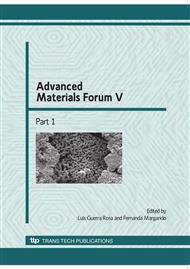p.430
p.437
p.444
p.450
p.459
p.465
p.471
p.478
p.485
The Backing Bar Role in Heat Transfer on Aluminium Alloys Friction Stir Welding
Abstract:
Although new structural and advanced materials have been used in the automotive and aircraft industries, especially lightweight alloys and advanced high strength steels, the successful introduction of such materials depends on the availability of proven joining technologies that can provide high quality and performance joints. Solid-state joining techniques such as Friction Stir Welding (FSW) are a natural choice since their welds are produced at low temperatures, so the low heat input provides limited, slight distortion, microstructural and mechanical degradation. Great effort has currently been devoted to the joining of Al-Cu-Mg and the Al-Mg-Si alloys because of their high strength, improved formability, and application in airframe structures. FSW is a continuous, hot shear, autogenous process involving a non-consumable and rotating tool plunged between two abutting workpieces. The backing bar plays an important role in heat transfer from stir zone (SZ), which can influence the weld microstructure as well as the consolidation of material in the root of the join. This study aims at investigating issues concerning heat generation, within the SZ of friction stir welded aircraft aluminium alloys.
Info:
Periodical:
Pages:
459-464
Citation:
Online since:
January 2010
Authors:
Keywords:
Price:
Сopyright:
© 2010 Trans Tech Publications Ltd. All Rights Reserved
Share:
Citation:


